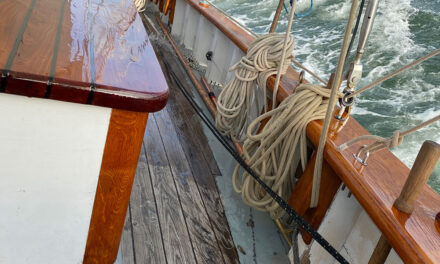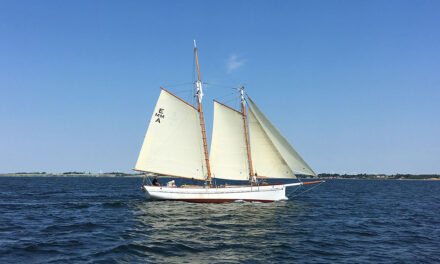The masts are simply two larch trees planed and sanded round.

View into Henry’s shed: To the right is the rough fore mast with some finished mast hoops. To the left is a massive beam that will be turned into the main mast after having been laid up here over more than 10 years.
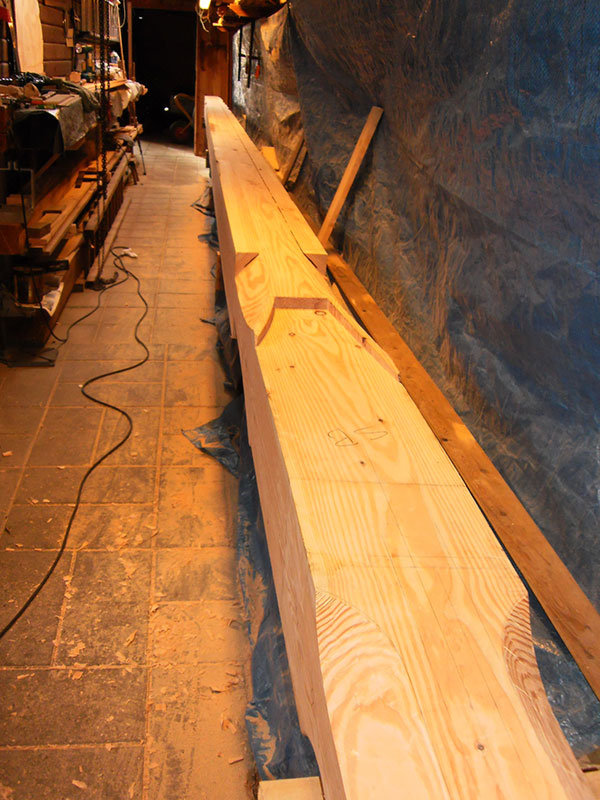
The main mast end being shaped (it’s square on top).
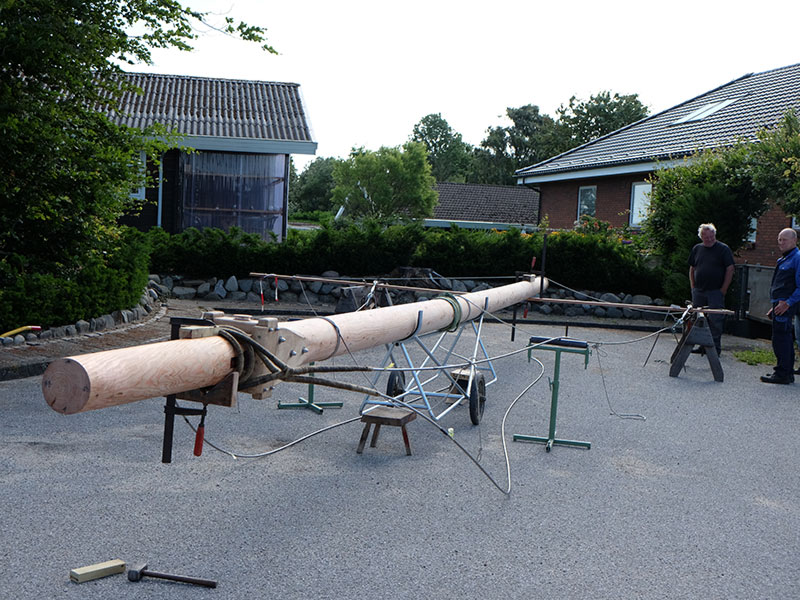
With the top splices done the foremast shrouds can be measured.

The mark will have to sit at the apex of the thimble when the bottom splice is finished.

Some hardware manufactured at a local metal working shop. Counterclockwise from upper left: Fore sail stay attachment to the bow sprit with anchor roller – axle and plates for the flexible spreader bar – mast bands for the foot and for halyard sheaves – tangs for the jib stay – mast band for the tip of the top mast.
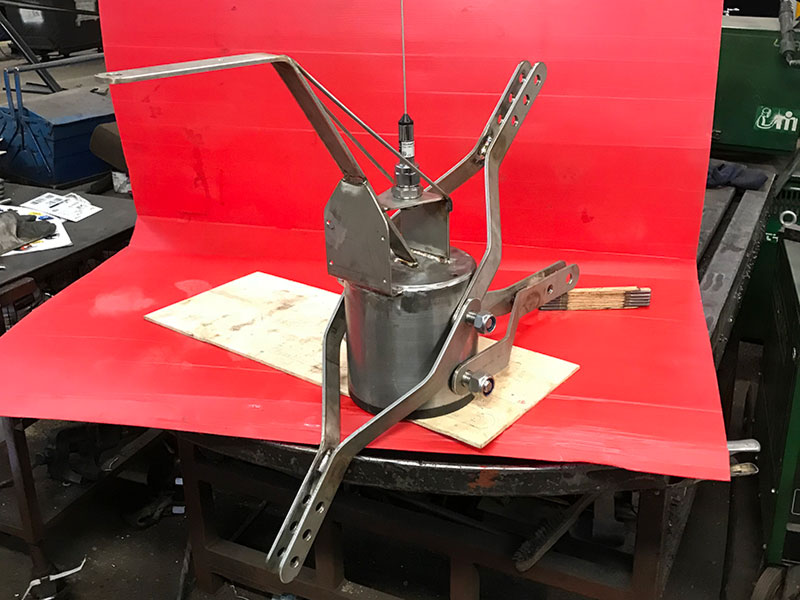
Mast head fitting for the fore mast…

Shrouds mast hoops and some temporary halyards must go on before the masts are stepped.

Splices at the shroud terminals were first slatered with a mixture of linseed oil and stockholm tar and then serviced with strips of sailcloth and three layers of tarred fishing twine. Finaly they were lacquered to keep the tar where it belongs.
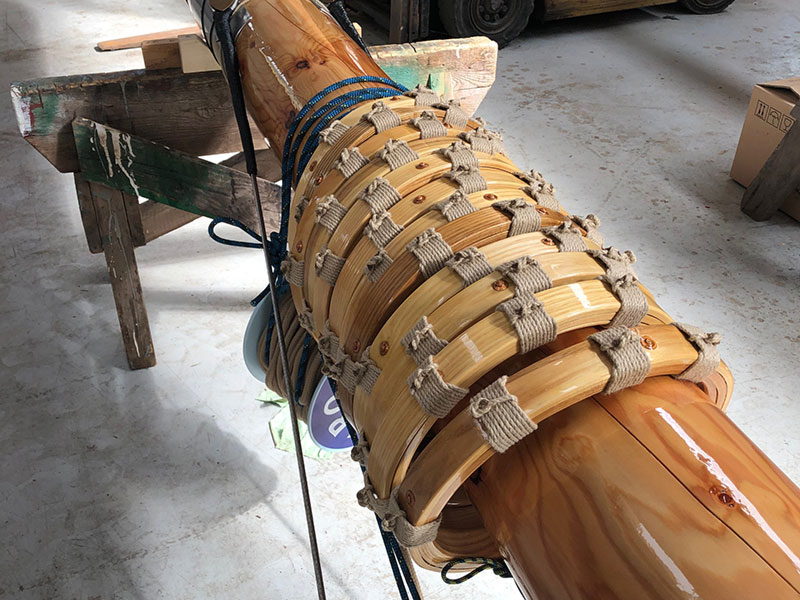
Mast hoops and halyards on the main mast

Installing the temporary halyard on the top mast. There is no other way to get up there once the masts are stepped – unless you have a helicopter or a crane.

Topmast beeing prepared – the top mast band needs to go on there before the “onion” is glued on at the very top!

Detail of the top of the shooner mast

After thorough treatment of the cracks with fungicide and oiling them with Owatrol D1 the masts were finished with 8 layers of D2 and the cracks were sealed with tallow usually used for sealing wine barrels.


